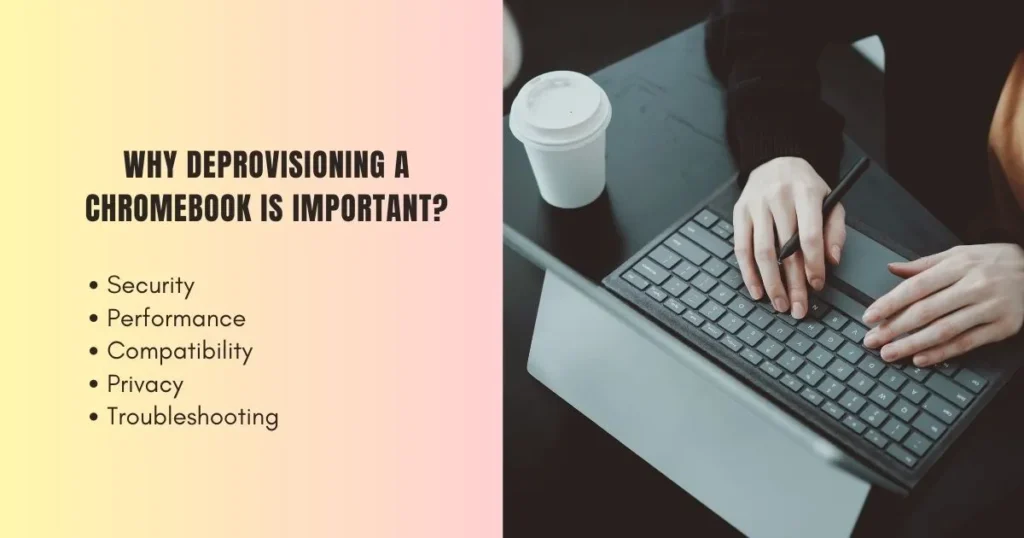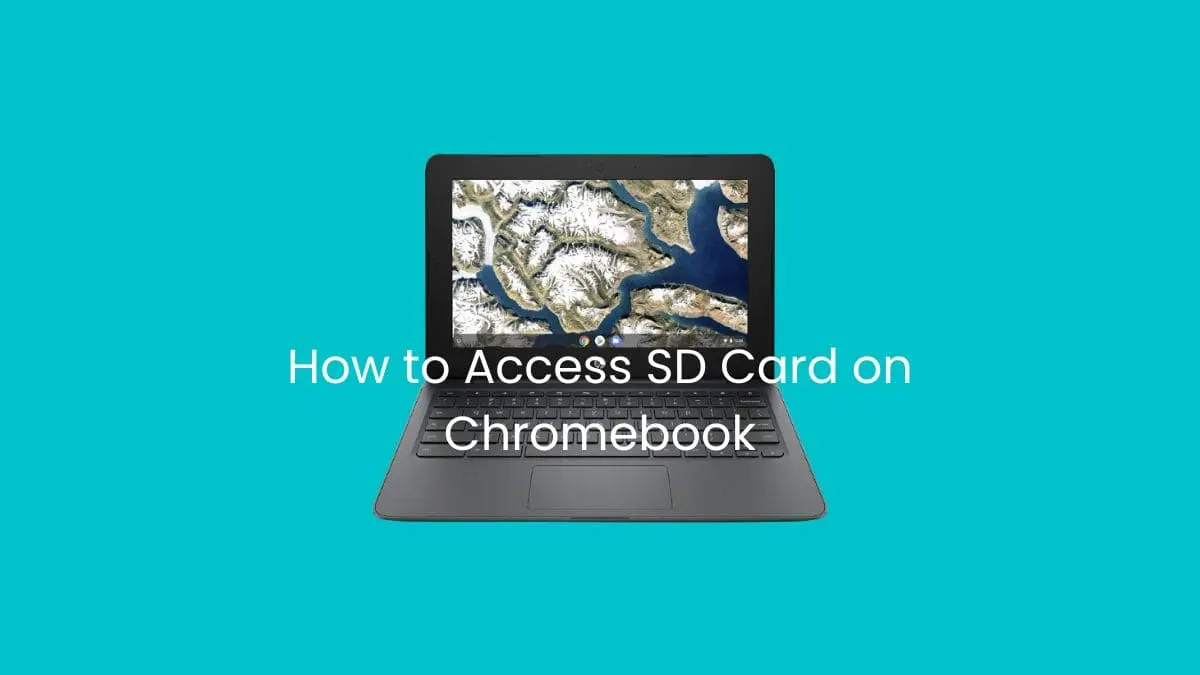Are you looking to get rid of your Chromebook, but don’t know how to deprovision it? If so, don’t worry. Deprovisioning a Chromebook is easy and straightforward.
Whether you want to sell the Chromebook or give it away, you need to deprovision it first. In this article, we’ll explain how to deprovision a Chromebook correctly.
Differentiate between provisioning and deprovisioning a Chromebook
Before you can begin to deprovision your Chromebook, it is important to understand the differences between provisioning and deprovisioning.
Provisioning a Chromebook is the process of setting up a device with a Google profile and configuring it to your preferences. It allows you to customize the settings, add applications, sync data across devices, and other tasks.
On the other hand, deprovisioning a Chromebook is the process of removing all user data from the device and returning it to its factory settings.
When you deprovision a Chromebook, all user data is removed and personal settings are reset. It includes any passwords, bookmarks, contacts, applications, emails, documents, photos, music files and other data that was stored on the device.
All of this information will be erased and cannot be recovered. The device will also become unable to access your Google account or connect to the internet after deprovisioning. So why deprovision your Chromebook?
5 Easy steps to deprovision a Chromebook

Step 1: Backup Files
Before you begin the process of deprovisioning your Chromebook, it is important to back up any files or data that you want to keep.
You can do this by connecting the device to a computer with an appropriate cable and transferring all of your personal files from the Chromebook onto the computer.
It will ensure that all of your important documents, pictures, settings and more are safe before they are wiped away during deprovisioning.
Step 2: Sign Out
Once you have backed up any important data, make sure to sign out of all accounts associated with your Chromebook including Google Drive, Gmail, and others.
If you don’t do this then the data associated with those accounts may not be completely erased during the deprovisioning process.
Step 3: Reset to Factory Settings
After you have signed out of all accounts, it’s time to reset your Chromebook back to its factory settings.
This is done by going into the system settings and selecting “Reset” or “Restore Factory Settings” depending on which model of Chromebook you are using.
Once this has been completed, all of the data associated with your device will be wiped away and your device will be like new again.
Step 4: Powerwash
The last step in deprovisioning a Chromebook is to perform a powerwash. This erases all of the data from your device and sets it back to its original state as if it were fresh out of the box.
It is important that this step is performed as it will ensure that all of your personal data and settings are completely wiped from the device so that it can be used by someone else.
Step 5: Final Checks
Before you hand over your now deprovisioned Chromebook to its new user, make sure to check a few things such as ensuring the powerwash was successful and that no files were left behind on the device.
This will help ensure that the new owner has a smooth transition when they begin using their new Chromebook. Deprovisioning a Chromebook is not a difficult process but it is one that should be done properly in order to protect both your data and the security of the next user’s data.
Why Deprovisioning a Chromebook Is Important?
There are a many reasons why it is important to deprovision a Chromebook before returning or selling it.
If your Chromebook is jailbroken, it is important to deprovision it before selling or returning the device. Jailbreaking a Chromebook gives access to root files, which can allow malicious users to gain access to your personal data and even hijack your device.

Here are some other reasons why you should deprovision your Chromebook:
1. Security:
Deprovisioning a Chromebook ensures that no one can access any of the data stored on the device. This is especially important if you are handing off your device to someone else or donating it.
By deprovisioning the Chromebook, you can rest assured that all of your personal data is securely erased and cannot be accessed by anyone else.
2. Performance:
When a Chromebook has been used for an extended period of time, it can become slow and unresponsive due to accumulating data and applications.
3. Compatibility:
If you plan on using your Chromebook with different versions of Chrome OS or if you are going to switch to a new model, then deprovisioning is essential.
When you deprovision a Chromebook, all user data is wiped and the device is returned to its factory settings so that it can be compatible with any version of Chrome OS or another model.
4. Privacy:
Deprovisioning a Chromebook is also important for privacy. When you deprovision your device, all of your personal data and settings are securely erased so that no one can access it.
It ensures that your information is kept safe and secure from any potential hackers or malicious actors.
5. Troubleshooting:
Deprovisioning a Chromebook is also useful for troubleshooting purposes. If you can’t figure out why your device isn’t working correctly, then deprovisioning it may be the best solution.
It will erase all of the data, applications, settings and more from your device so that you can start with a fresh slate and try to resolve any technical issues.
How to reprovision a deprovisioned Chromebook?
Reprovisioning a deprovisioned Chromebook is an important step to take if you need to give the device back to its original owner.
Reprovisioning will restore all of the data, settings, and applications that were previously installed on the device so that it can be used again.
It is also vital for maintaining user privacy as it ensures that any information left behind from the previous user is securely wiped and that the new owner’s data and settings remain secure.
Step 1: Power Off:
First, power off your Chromebook completely by holding down the power button until the device shuts itself off.
It is important to make sure that you do this properly as it will ensure that all of the data on the device is properly erased before you begin reprovisioning.
Step 2: Performing a Recovery
Once you have powered off your device, press down on both of the “Ctrl” and “Alt” keys while pressing the power button again to turn it back on. This should bring up a recovery screen which will allow you to start the process of reprovisioning your Chromebook.
Step 3: Selecting a Network
You will then need to choose a network which you can connect your Chromebook to. This could be a wireless connection or even an Ethernet cable plugged into your router.
Once you have selected the correct network, click “Continue” and wait for the Chromebook to establish a connection with it.
Step 4: Enter Credentials
The next step is to enter any credentials that are necessary in order to access the network that you have chosen. This information could include a username, password, or even your email address if required by the network provider.
Step 5: Re-Enrolling Your Device
Once you have entered all of the pertinent information, click “Continue” and follow any further instructions on the screen.
The Chromebook should then begin to re-enroll itself in the chosen network and set up any necessary software or settings that were previously installed on it.
Step 6: Powering Off Again
After the reprovision process has been completed, you should power off your device in order to ensure that all of the data is properly wiped before being used again.
To do this, hold down the power button until the device shuts itself off completely.
Step 7: All Done
You have now successfully deprovisioned your Chromebook! It is now ready to be used by a new owner or even given away as a gift with no worries about personal information remaining on it from another user. Congratulations!
Final Words:
Deprovisioning a Chromebook is an important step to ensure that all personal data and settings from the previous owner are cleared away before it is used by someone else.
By following the steps outlined above, you can easily get your Chromebook ready for its new home in no time at all.
Before going through the deprovisioning process, make sure that you have backed up any necessary data or settings that may be lost during this process.
Frequently Asked Questions
Can you mass Deprovision Chromebooks?
Yes, it is possible to mass deprovision Chromebooks by using Google’s policy-based management. This process can be used to quickly and easily deprovision multiple devices at once.
Does Deprovisioning Delete Data?
Deprovisioning a device does not delete any data on the device itself but will remove the users account from the device. It is important to remember to back up any necessary data or settings before deprovisioning a device in case it is accidentally lost during the process.
Can I Reprovision a Chromebook?
Yes, once a Chromebook has been deprovisioned, it can be reprovisioned and used by another user.
What else Can I do to secure my device after Deprovisioning?
is always a good idea to perform a factory reset on your device after deprovisioning it.
It will clear out any remaining files and settings left over from the previous user, ensuring that your device is clean and secure for its new owner.
Does Deprovisioning a Chromebook free up the license?
Yes, deprovisioning a Chromebook will free up the license associated with the device so that it can be used on another device.
Can you remove a Chromebook from enterprise enrollment?
Yes, you can remove a Chromebook from enterprise enrollment by going through the deprovisioning process. This will effectively disable all features associated with the enrollment and return the device to a standard consumer setup.
What is an example of user provisioning?
User provisioning is the process of setting up a user account on a device or system.
For example, in order to get a Chromebook up and running for a new user, you would need to go through the user provisioning process which includes creating an account, assigning privileges, and configuring settings.




![Why does my Chromebook keep disconnecting from WiFi? [2024]](https://laptopspapa.com/wp-content/uploads/2023/04/Why-Does-My-Chromebook-Keep-Disconnecting-from-WiFi.webp)
